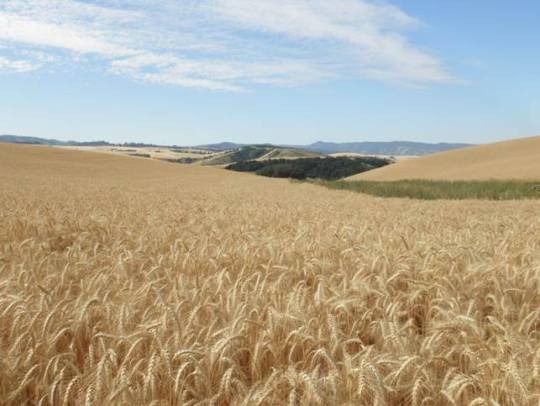
Beautiful Schwerin Farms is protected for future generations by a conservation easement, funded by the WWRP.
Located in the foothills of the Blue Mountains, the 232 acre Schwerin Farmland has been farmed continuously since 1890. Crops grown onsite include wheat, peas, garbanzos, canola, alfalfa, and grass seed.
The land is located near Walla Walla, and area in which many properties are being developed into vacation homes. The farm’s owner accordingly sought help to protect Schwerin Farms for future generations.
In 2012, the project’s sponsor, the Blue Mountain Land Trust, received a WWRP grant to help fund a conservation easement, allowing the land to remain a working farm and preserving the beautiful views and heritage of the Blue Mountains. Maintaining this farmland also protects clean water for the Walla Walla River, as well as important wildlife habitat for birds, deer, and elk.
This is a great example of how land trusts can use the WWRP to preserve land for future generations. Recent changes to the WWRP will extend this work even further by allowing land trusts to apply in more categories, including natural areas, critical habitat, and urban wildlife.
Preserving working farms is especially important today, when agricultural land is quickly disappearing. Between 1950 and 2014, almost 50% of farmland has been lost in Washington state, while prices of the land have soared. In the last year, the average sale price of high-quality Washington farmland has increased 25%, and has increased by 47% in the last four years. This means that a 408 acre parcel, bought at around $3.5 million in 2012, would now cost about $5.1 million. Read more in this article from the Seattle Times.
Another factor that makes protecting farmland so crucial is the fact that agriculture contributes 13% to our state’s economy and supports over 82,000 jobs.
The WWRP is currently our state’s only source of statewide funding for farmland and is a key component to purchasing and preserving Washington’s working lands.
